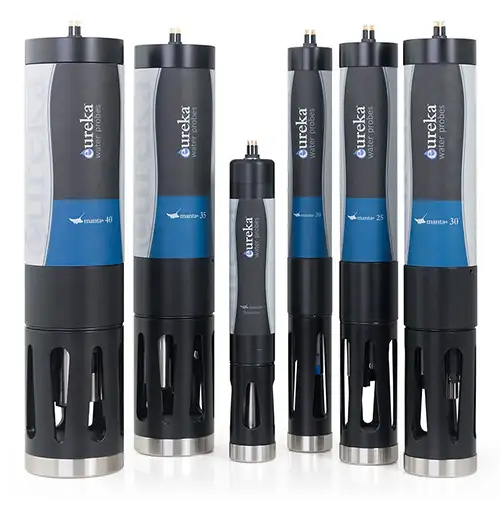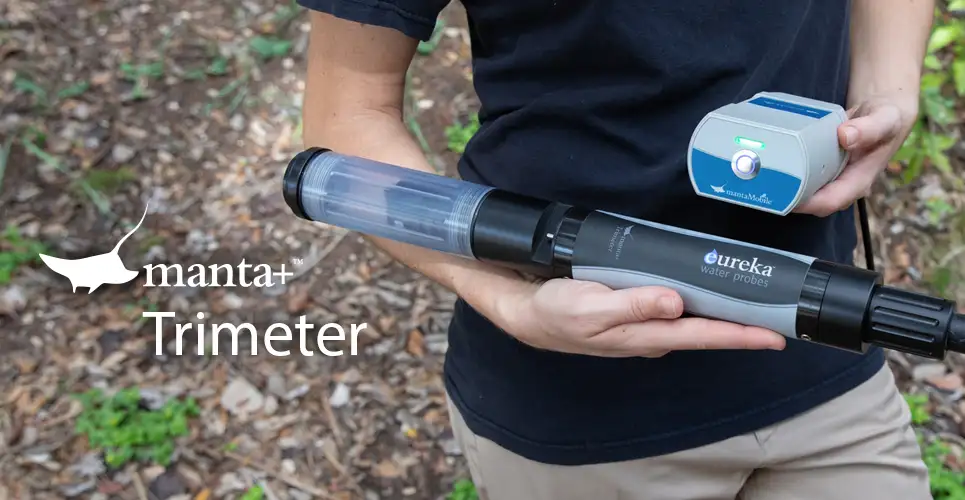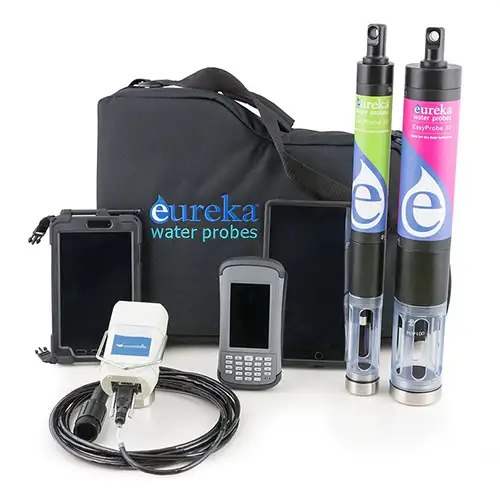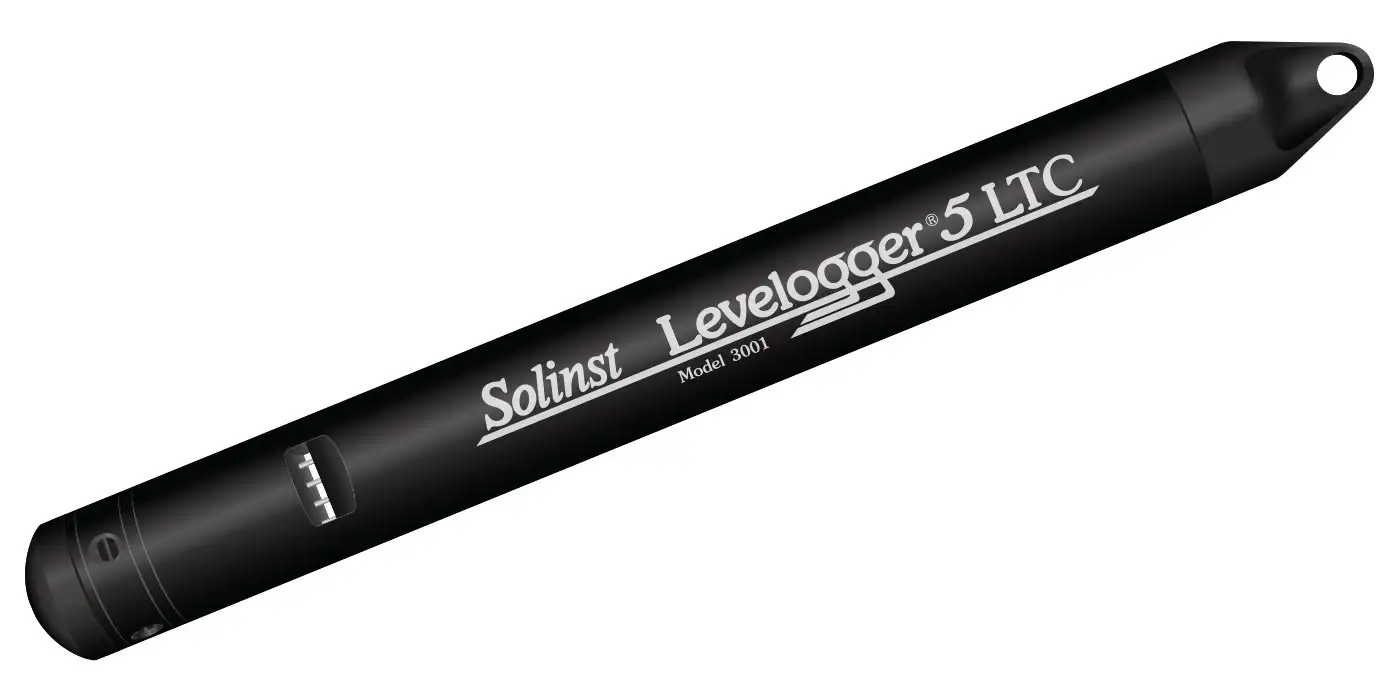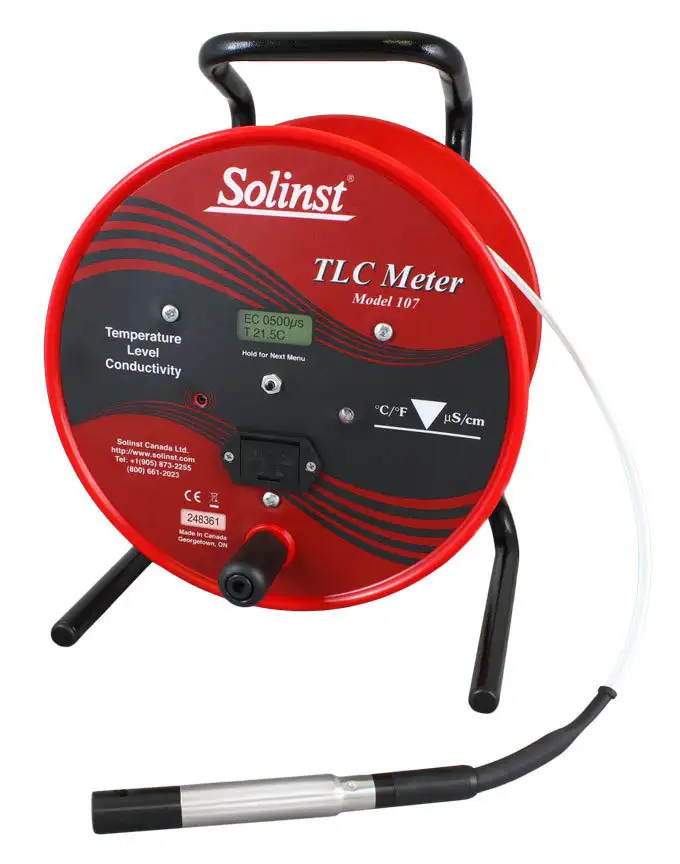ORP Sensor: Oxidation Reduction Potential: Water Quality Probe
Solinst Eureka
2113 Wells Branch Pkwy, Suite 4400
Austin, TX, USA
78728
Tel: +1 512-302-4333
Fax: +1 512-251-6842
email: [email protected]
Depth Discrete Groundwater Monitoring
Reduce Costs and Field Time
Solinst Field Services
Safeguard your project’s success and mitigate any potential for downtime or additional costs.
Why would I want to measure ORP?
Oxidation reduction potential, or ORP, is a measure of how chemically oxidizing or reducing a body of water is. In general, the ORP of a solution determines what chemical reactions will tend to occur, indirectly affecting the types of flora and fauna that will thrive in the water. In well-oxygenated natural waters at equilibrium, dissolved oxygen (DO) dominates the ORP of the solution, minimizing the importance of measuring ORP. Under conditions of low DO, however, ORP can be important in determining which forms of a chemical will be favored (i.e., nitrate-nitrite-ammonia, sulfide-sulfite-sulfate, ferric-ferrous, etc.). In addition, ORP is a good indicator of the presence of industrial oxidizing chemicals such as chlorine used to disinfect drinking and wastewater.
The true oxidation-reduction potential of a solution is a thermodynamic property that can only be determined by calculation involving every species present in the water. Practically speaking, ORP is defined as the potential that develops at an inert electrode when it comes into equilibrium with the solution. Unfortunately, not all compounds react reversibly or rapidly with the electrode, and adsorption of compounds on the electrode surface result in differences between true and observed ORP readings. This can also lead to very long electrode response times for highest accuracy. Knowing the limitations of measuring and interpreting ORP readings, useful information can still be obtained from many natural waters.
How is ORP measured?
ORP is measured as the voltage drop across the platinum membrane of an ORP electrode. A reference electrode is used to complete the voltage-measuring circuit. Because platinum does not react with ions in the water, it won’t give or take any electrons from those ions. The potential (voltage) created by this refusal is what you’re actually measuring as ORP.
Solinst Eureka’s ORP sensor, as with most other ORP sensors, consists of a polished platinum electrode sealed in glass, and is consistent with Standard Methods 2580 A. Unlike an Ag-AgCl reference electrode whose potential is determined by the amount of chloride in solution, platinum is a noble, non-reactive metal whose potential is determined by the potential of the solution. The sensor is inherently linear, and fastest response times are achieved when the sensor surface is clean and freshly polished. The practical operational range of an ORP sensor is not limited by the electrode itself, but by the physical characteristics of natural waters.
The ORP sensor must be used with Solinst Eureka’s pH reference electrode, which is described in detail in the section on pH. A temperature sensor is not required, but may be useful to interpret ORP data if accuracy greater than ±20 mV is desired, since the reference electrode shifts slightly with temperature. No other sensors require the presence of the ORP sensor.
Since ORP is operationally defined as the potential at a platinum electrode, only a simple additive correction factor is made to the raw millivolts reading during calibration. This corrects for the fact that various reference electrodes can have different filling solutions that shift their base potential. It also allows the user to correct the reading to whatever reference electrode convention is used by their organization (NHE, SCE, 3 M KCl, saturated KCl, etc.). No temperature correction is made to the readings.
ORP sensors are calibrated in an ORP buffer containing both the oxidized and reduced forms of a compound that rapidly reaches thermodynamic equilibrium with platinum. Ferric-ferrous salts are often used (Lights or Zobel’s Solution), or solutions of quinhydrone at various pH values. Calibration in a single solution is usually sufficient, though checking the reading at an alternate ORP is recommended.
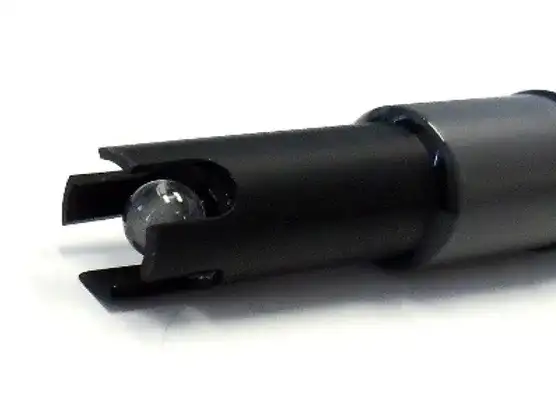
ORP Sensor for
Water Quality Sondes
- Range
-999 to +999 mV - Accuracy
±20 mV - Resolution
0.01 - Units
mV - Calibration
one point – quinhydrone - Maintenance
cleaning and calibration - Sensor Life
10 years - Sensor Type
platinum electrode, refillable
Ag-AgCl flowing junction reference electrode
What should I know about ORP measurement in the field?
Not all compounds react reversibly or rapidly with the electrode, and adsorption of compounds on the electrode surface result in differences between true and observed ORP readings. This can also lead to very long electrode response times for highest accuracy.
How does Eureka’s ORP measurement compare with others?
Because all manufacturers use similar basic sensor mechanisms, there is not a great deal of difference between ORP sensors on the market. However, Eureka’s re-fillable flowing-junction reference electrode provides better long-term stability than gelled-electrolyte reference electrodes. Refilling the reference electrode reservoir also eliminates the need to buy expensive replacement pH tips.
Solinst Eureka’s ORP sensor is combined with the pH sensor. The pH/ORP sensor may be installed on any Manta probe, along with other sensors. Eureka multiprobes can be configured with battery backs for autonomous self-powered deployment, used with field displays for site-to-site spot checking, or connected to data telemetry stations for real-time remote monitoring. Eureka sondes are portable, durable, and cost-effective. In cases where bio-fouling is expected, a universal wiper may be added to wipe the sensor.
Related Products
Manta Series Water Quality Probes
Solinst Eureka offers the largest selection of water quality sensor technologies in the industry. So in addition to standard configurations, each probe may be customized for your specific application. Pick sensors of your choice to fully populate larger probes, or add a battery pack to convert a probe to a logging device.
Manta Trimeter Water Quality Probe
The Trimeter holds any one sensor* from the Sensor Parameters list, Plus temperature and depth sensors (both are optional). For example, a Trimeter configuration could be turbidity, temperature, and depth. Another example could be DO and temperature.
EasyProbe: Water Quality Sondes
The EasyProbe, by Solinst Eureka, is a high-performance, cost-effective water quality monitor. It's ideal for spot-checking, remote telemetry, education, research, aquaculture, and more. The EasyProbe20 includes sensors for temperature, dissolved oxygen, conductivity, and pH, while the EasyProbe30 adds a turbidity sensor. Eureka multiprobes are known for their reliability, with a three-year warranty covering all sensors, and have the lowest maintenance costs in the industry.
Water Level, Temperature & Conductivity Datalogging
The Levelogger 5 LTC measures and logs water level fluctuations, temperature and conductivity. It is programmed to record at intervals as often as 2 seconds. It includes an 8-year battery, memory for 100,000 sets of readings, and comes in 6 pressure ranges. A PFAS-free coating (inside and out) provides superior corrosion and abrasion resistance.
TLC Meter – Measure Accurate Temperature, Level & Conductivity
A TLC Meter provides accurate, stable temperature and conductivity measurements, displayed on a convenient LCD display for easy reading. Static water level and depth of readings are read off Solinst flat tape, which is precisely laser-marked every mm or 1/100 ft. Tape lengths are available to 300 m (1000 ft).

